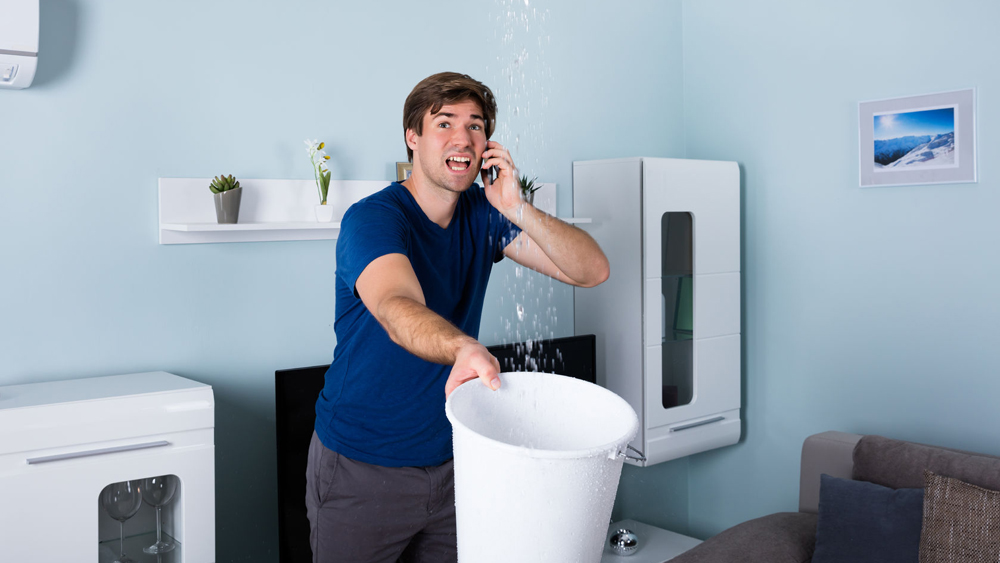Your Home's Common Typical Causes of Leak Problems: In-Depth Analysis
Your Home's Common Typical Causes of Leak Problems: In-Depth Analysis
Blog Article
The publisher is making a number of good pointers on the subject of Common Water Leaks In House as a whole in this content following next.

Leaks not only trigger waste of water but can likewise trigger unneeded damage to your residence as well as advertise unwanted organic growth. Regrettably, water leaks could go unnoticed since the majority of the pipework in our home is hidden. By looking and recognizing for everyday situations that create leaks, you can shield your house from future leakages as well as unneeded damages. Today, we will look at 6 leak triggers that might be triggering your pipes to trickle.
Immediate temperature level changes.
Extreme temperature level changes in our pipes can cause them to expand and contract all of a sudden. This expansion and also contraction might create cracks in the pipelines, especially if the temperature are listed below freezing.
Rusty water systems
As time goes by, your plumbing system ages and also deterioration such as rust may begin eating away the pipelines. This may be the reason for staining or bending on your water pipes. This asks for an assessment with your plumber promptly. If our plumbing system is old, take into consideration changing the pipelines given that they go to a higher danger of rust than the newer designs.
Defective Pipeline Joints
Pipeline joints can degrade over time, resulting in water leaks. If you have noisy pipelines that make ticking or banging sounds, especially when the warm water is turned on, your pipe joints are probably under a lot of pressure.
Elbowing in roots
A lot of water leakages start outside your home instead of inside it. If you notice an abrupt decrease in water pressure, state in your tap, take some time to head out as well as examine your lawn. You could see wet patches or sinkholes in your yard, and that could imply that tree origins are attacking water lines creating water to seep out. You can have your plumber check for invasion, especially if you have trees or bushes near your property.
Poor Water Connectors
Sometimes, a leakage can be triggered by loosened pipes and pipes that supply your devices. Generally, moving is what creates the loosened water Connections. You could discover when it comes to a washing machine, a tube may spring a leak as a result of shaking during the spin cycle. In case of a water links leakage, you might notice water running directly from the supply line or puddles around your devices.
Blocked Drains
Blocked drains might be aggravating and also inconveniencing, yet they can often end up causing an overflow leading to break pipelines. Keep getting rid of any type of products that might drop your drains pipes that can obstruct them to stay clear of such aggravations.
All the above are reasons for leaks yet not all water leakages arise from plumbing leakages; some leakages might come from roof leakages. All leakages need to be fixed right away to prevent water damages.
Leaks not only cause waste of water however can additionally trigger unnecessary damage to your house and also advertise undesirable organic development. By comprehending and looking for daily scenarios that create leakages, you can secure your home from future leakages and unneeded damages. Today, we will certainly look at 6 leak triggers that might be causing your pipes to drip.
At times, a leak can be triggered by loosened hoses as well as pipes that supply your devices. In instance of a water links leakage, you may discover water running directly from the supply line or puddles around your devices.
How To Check For Water Leak In Your Home
How To Check for Leaks
The average household's leaks can account for nearly 10,000 gallons of water wasted every year and ten percent of homes have leaks that waste 90 gallons or more per day. Common types of leaks found in the home are worn toilet flappers, dripping faucets, and other leaking valves. These types of leaks are often easy to fix, requiring only a few tools and hardware that can pay for themselves in water savings. Fixing easily corrected household water leaks can save homeowners about 10 percent on their water bills.
To check for leaks in your home, you first need to determine whether you're wasting water and then identify the source of the leak. Here are some tips for finding leaks:
Take a look at your water usage during a colder month, such as January or February. If a family of four exceeds 12,000 gallons per month, there are serious leaks.
Check your water meter before and after a two-hour period when no water is being used. If the meter changes at all, you probably have a leak.
Identify toilet leaks by placing a drop of food coloring in the toilet tank. If any color shows up in the bowl after 10 minutes, you have a leak. (Be sure to flush immediately after the experiment to avoid staining the tank.)
Examine faucet gaskets and pipe fittings for any water on the outside of the pipe to check for surface leaks.
Undetected water leaks can happen without the home or business owner even realizing. If you suspect a water leak, but not able to find the source. It is time to contact a professional water leak detection service, The Leak Doctor.
How To Find a Water Leak In Your Home
https://www.leakdoctor.com/blog/How-To-Check-For-Water-Leak-In-Your-Home_AE197.html

I stumbled upon that blog entry on How to Find Water Leaks while doing a lookup on the internet. Do you know another individual who is fascinated by How to Find Water Leaks? Please feel free to share it. Thank you so much for going through it.
Secure top-grade service. Report this page